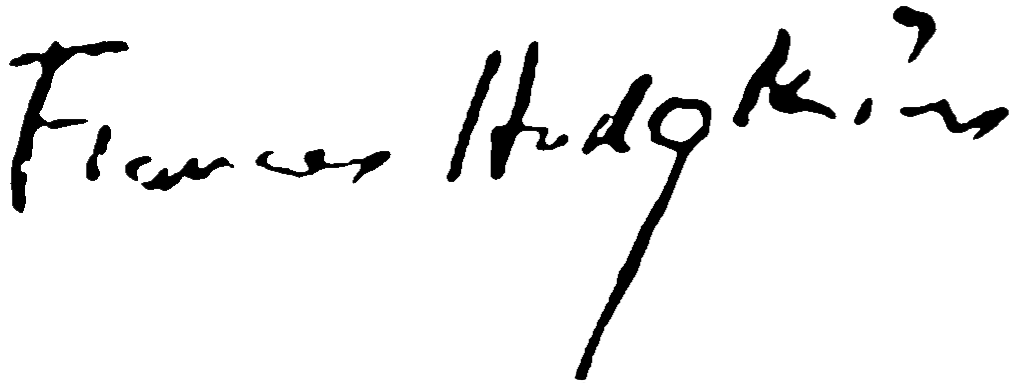-
Frances Hodgkins
The Brown Vase with Flowers, c.1930
Watercolour, 47.5 x 35.5 cm
Signed (Illegible) lower left
Prov: Lucy C. Wertheim collection, London
Exhib: Manchester Art Gallery, Sept 1947 No. 29
Ref: Collins & Buchanan 'Frances Hodgkins on Display'. Hocken Library P. 91
As well as being an excellent conversationalist, Frances Hodgkins was described by friends and acquaintances as extremely witty. And her sense of humour, when painting was going well, sometimes spilled into her compositions, as here in Brown Vase with Flowers, c1930. While there is no reference to the perky little china dog in the title, the artist has given liveliness to a static object, bringing the ornament to life. But her attitude to ornaments wasn’t always positive. In 1902, for example, anxious that their presence might distract them from their work, she and her fellow students were forced to ask their landlady in Dinan, Brittany, to remove some of what she termed ‘the bric-a-brac from floor to ceiling, all sorts of unconsidered trifles in the way of pots & fans & artificial flowers & drapery & ormolu ornaments’ from the room.
Yet at the end of the 1920s, when she began to develop the still life in landscape compositions that were to earn her fame, Hodgkins came to see china shoes, vases, dogs, and similar ornaments as valuable, pouncing on them to add animation to her still life paintings. Hodgkins wrote to friend and dealer Lucy Wertheim in 1929 from Haywards Heath, ‘I am so happy here – painting in the garden – groups of wildflowers, fruit blossoms & funny cottage chimney ornaments. Hodgkins had first met Wertheim while living in Manchester in 1924. Effusive, warm, and full of energy, Wertheim was a great support both morally and financially at the time, and the two remained friends until the early 1930s. Hodgkins, along with Cedric Morris and Lett Haines, encouraged Wertheim to open her modern gallery in London, and the dealer bought up several Hodgkins’ watercolours which she kept in stock. Eventually, Hodgkins tired of Wertheim’s need to envelop her artists to a controlling degree, and their relationship waned, a loss which Wertheim never quite understood.
Hodgkins returned to the theme of ornaments while staying in Dolaucothy in Wales in 1942. She sent a note to one of her current dealers Eardley Knollys, saying ‘I have done masses of work in between showers of torrential rain, in and about the woods & river of Dolaucothy and have even seriously made pictures of the funny chimney ornaments, which do so lend themselves to decoration. I love them – tender silly unarranged things, receptacle for old & faded letters. I always fall for them & always shall…’.
And if we look again at Brown Vase with Flowers, there are other elements that add lively notes. The handsome vase of flowers rises in a stately fashion in the centre of the watercolour, yet the Venetian glass epergne on the left, its upright vase displaying the glass bobbles popular in Murano production, seems to sway as if trying to escape the apples piled around its feet. And while the composition is balanced by the pedestal glass bowl on the right, a tightly bunched cloth under the brown vase is being held down by the little dog’s front paws.
On studying the work more closely, we see that Hodgkins is also playing with our sense of perspective, as the epergne on the left appears to be near the foremost edge of the table (as suggested by the darker vertical brushstrokes that drop away beneath it), but if that is so then the dog and the cloth to the right would tumble into our space. However, when we consider the right-hand side of the painting, the surface seems to reach forward in a stable manner, holding vase and dog in place. In 15th century Italian religious paintings, it was not uncommon for a cloth to be painting draped over a parapet or the edge of a table, as if dropping into the viewer’s space. From her travels, Hodgkins would also have seen examples of Dutch 16th century still life painting, where objects on a table sometimes jut out over the foremost edge, producing a dis-ease for the viewer, the immediate desire being to reach out and catch the dish or bowl before it fell. Even so, as a modernist, Hodgkins’ vision was rooted in the everyday, and she may simply be challenging us to look closely. If so, perhaps the little dog is laughing at the joke.
In 1947, the watercolour was still in the possession of Lucy Wertheim, but whether she had purchased the work from Hodgkins for her own enjoyment, or whether it remained in her gallery store is unknown. She lent the work to the large commemorative exhibition held from August to September at the City of Manchester Art Gallery that year, where it was described as Brown Vase with Flowers, to differentiate it from another work simply called Brown Vase, which Wertheim was obviously familiar with, as a sticker on the back of her own work is inscribed ‘Brown Vase, vertical’, the other composition being in landscape format. .
Written by Mary Kisler.
Provenance
Lucy Carrington Wertheim Collection, London
Private Collection, Auckland
Literature
Arthur R. Howell, Frances Hodgkins: Four Vital Years (London, 1951), p. 113
Roger Collins and Iain Buchanan, Frances Hodgkins on Display 1890 – 1950 (Hocken Library 2000) p. 91
Exhibited
Manchester, U.K, Manchester Art Gallery, Pictures by Frances Hodgkins, Sept 1947 No. 29
Reference
Frances Hodgkins Database FH1313
(completefranceshodgkins.com)
